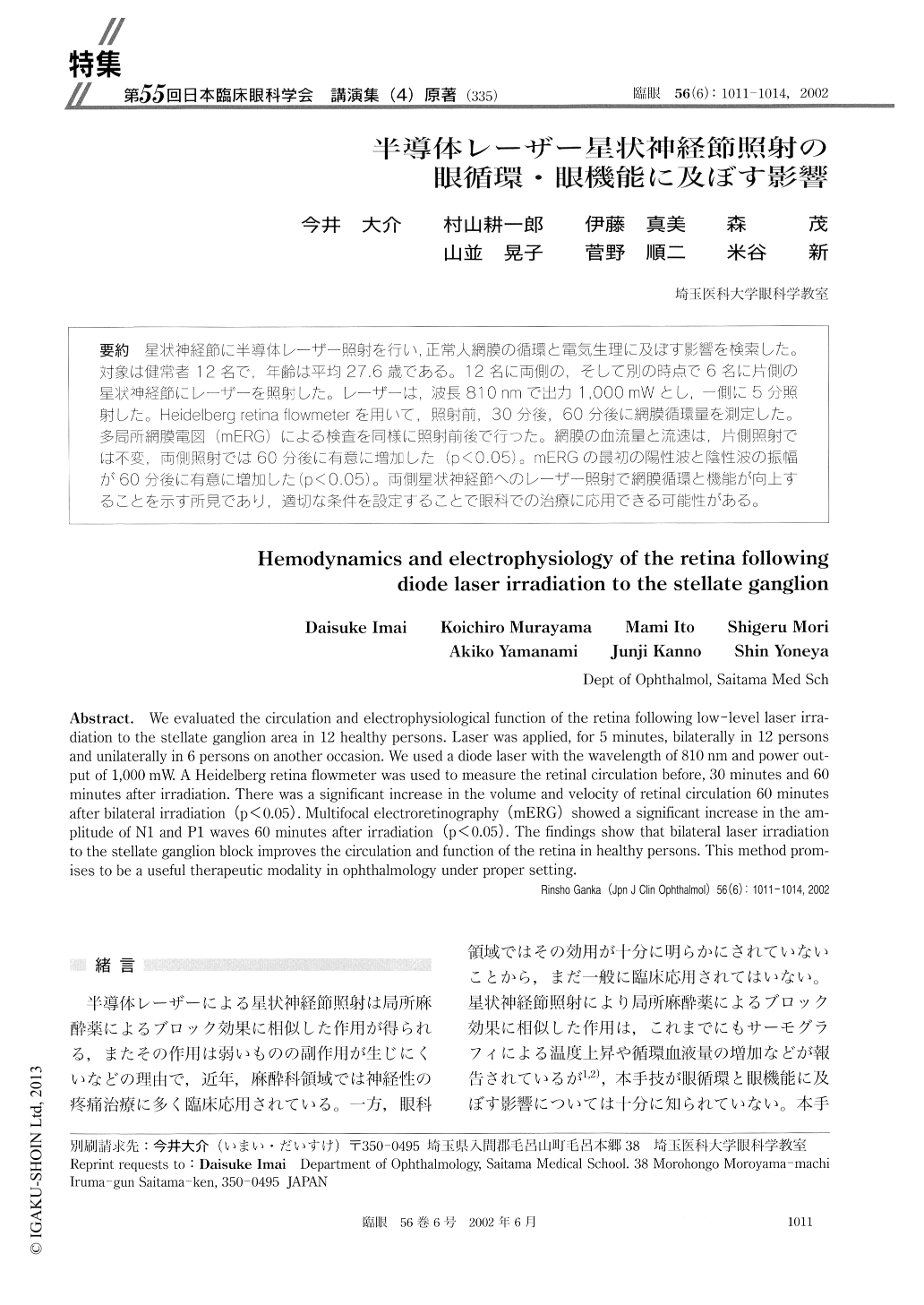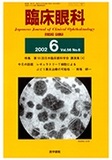Japanese
English
- 有料閲覧
- Abstract 文献概要
- 1ページ目 Look Inside
星状神経節に半導体レーザー照射を行い,正常人網膜の循環と電気生理に及ぼす影響を検索した。対象は健常者12名で,年齢は平均27.6歳である。12名に両側の,そして別の時点で6名に片側の星状神経節にレーザーを照射した。レーザーは,波長810nmで出力1,000mWとし,一側に5分照射した。Heidelberg retina flowmeterを用いて,照射前,30分後,60分後に網膜循環量を測定した。多局所網膜電図(mERG)による検査を同様に照射前後で行った。網膜の血流量と流速は,片側照射では不変,両側照射では60分後に有意に増加した(p<0.05)。mERGの最初の陽性波と陰性波の振幅が60分後に有意に増加した(p<0.05)。両側星状神経節へのレーザー照射で綱膜循環と機能が向上することを示す所見であり,適切な条件を設定することで眼科での治療に応用できる可能性がある。
We evaluated the circulation and electrophysiological function of the retina following low-level laser irra-diation to the stellate ganglion area in 12 healthy persons. Laser was applied, for 5 minutes, bilaterally in 12 persons and unilaterally in 6 persons on another occasion. We used a diode laser with the wavelength of 810 nm and power out-put of 1,000 mW. A Heidelberg retina flowmeter was used to measure the retinal circulation before, 30 minutes and 60 minutes after irradiation. There was a significant increase in the volume and velocity of retinal circulation 60 minutes after bilateral irradiation (p<0.05). Multifocal electroretinography (mERG) showed a significant increase in the am-plitude of N1 and P1 waves 60 minutes after irradiation (p<0.05). The findings show that bilateral laser irradiation to the stellate ganglion block improves the circulation and function of the retina in healthy persons. This method prom-ises to be a useful therapeutic modality in ophthalmology under proper setting.

Copyright © 2002, Igaku-Shoin Ltd. All rights reserved.


